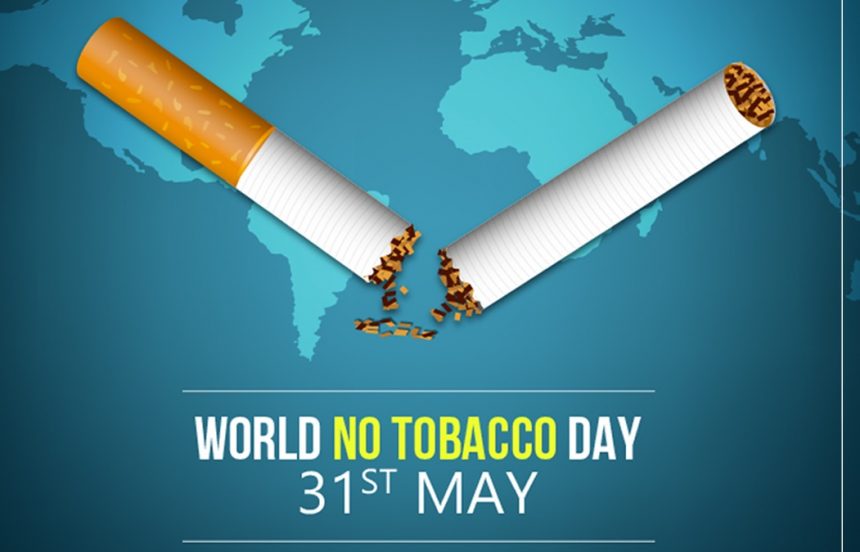As the world observed Anti-Tobacco Day on Saturday, Jammu and Kashmir finds itself grappling with a growing tobacco addiction crisis. Despite a ban on the sale of loose cigarettes and tobacco products under the Cigarettes and Other Tobacco Products Act (COTPA) 2003, tobacco remains openly available in markets across the Union Territory, including areas near schools and colleges.
The widespread availability of tobacco products has contributed to a troubling rise in usage. According to the Global Adult Tobacco Survey, 20.8% of adults in J&K use tobacco, nearly double the national average of 10.7%. A recent study by Government Medical College (GMC) Srinagar reveals sharp regional disparities in tobacco consumption across the UT.
Kupwara district leads with 56.6% of individuals using tobacco, followed by Anantnag (49.9%) and Budgam (48.8%). In contrast, Jammu district reports a comparatively lower rate at 26.5%, with moderate usage in Kathua (35.4%) and Srinagar (38.4%). Among males, the highest prevalence is seen in Kupwara (49.8%), Anantnag (47%), and Shopian (47%), while Jammu (25.7%), Kathua (33.3%), and Baramulla (34.7%) register the lowest rates. Female tobacco use remains significantly lower but varies regionally, with Bandipora (9.1%), Kupwara (6.8%), and Baramulla (6.5%) reporting the highest numbers.
Alarmingly, tobacco use among adolescents is on the rise. GMC Srinagar’s study indicates that 23% of teenagers are active smokers, with 29% having tried tobacco. Disturbingly, 16% of young users spend over Rs 1,000 monthly on tobacco products, often funded by parental pocket money. Experts cite peer pressure, parental smoking habits, and media glamorization as key drivers behind early tobacco experimentation.
Despite clear legal prohibitions banning the sale of tobacco within 100 meters of educational institutions under Section 6 of COTPA 2003, enforcement remains weak. Vendors continue selling loose cigarettes near schools and colleges with minimal oversight. Experts warn that without strict monitoring of these buffer zones and accountability for vendors, efforts to curb tobacco use among youth will remain ineffective.
Meanwhile, addressing these concerns, a senior official from the Jammu & Kashmir Tobacco Control Program, under the Department of Health & Medical Education, said on condition of anonymity, “We are committed to stricter enforcement of tobacco laws and a tobacco-free J&K.”
The public health implications are severe. A study by the Indian Council of Medical Research (ICMR) reports that J&K suffers some of the highest disability-adjusted life years (DALYs) due to tobacco use nationally. Smokers in the region are 2.5 times more likely to develop tuberculosis compared to non-smokers, underscoring the long-term risks.
The economic toll is equally concerning. A 2021 Union Health Ministry survey estimated that J&K spends approximately Rs 600 crore annually on tobacco products, draining personal finances and burdening an already stretched healthcare system coping with tobacco-related illnesses.
Official records indicate that in the fiscal year 2024-25, the Tobacco Control Program issued 3,666 challans for smoking violations under Section 4 of COTPA. Additionally, 67 challans were issued for selling tobacco to minors (Section 6[a]) and 261 for sales within 100 meters of educational institutions (Section 6[b]). The program also conducted 28 district-level coordination meetings, six divisional sensitization workshops, and 222 awareness campaigns in Kashmir Division, counseling 8,558 individuals.
Despite these efforts, experts argue that the persistent challenges underline the need for stronger enforcement and sustained public awareness campaigns. Until authorities address the gaps in implementation, J&K will continue to face the dual threats of rising tobacco consumption and its associated health and economic consequences, particularly among its youth.
World No Tobacco Day: J&K faces growing tobacco menace despite govt crackdown
• Loose cigarettes & tobacco products continue to be sold near schools & markets in J&K

Leave a Comment Leave a Comment







